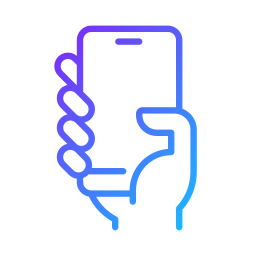Becoming a web developer is an exciting journey that opens up numerous opportunities in the digital landscape. With the rapid growth of online businesses, social platforms, and web-based applications, web developers play a crucial role in building and maintaining the digital world. Becoming a web developer is a journey that requires mastering a variety of skills, from coding languages to design principles. This article explores the essential courses needed to get started in web development and how each of these courses lays a solid foundation for a successful career in the field.
Top Courses in Programming Language
Understanding the Fundamentals of Web Development
The first step in the path to becoming a web developer is understanding the fundamentals of how the web works. A foundational course in web development provides an overview of web technologies, introducing aspiring developers to concepts such as web browsers, servers, and how data is transferred over the internet. It covers the basics of HTML (Hypertext Markup Language) and CSS (Cascading Style Sheets), which are essential for structuring and styling web pages.
HTML is the backbone of any web page, defining the structure and content, while CSS is responsible for the design, layout, and overall look and feel of the website. Mastering these two languages is crucial for anyone looking to build websites, as they form the core of web development.
Mastering Front-End Development: HTML, CSS, and JavaScript
Front-end development is the part of web development that deals with the user interface (UI) and the overall user experience (UX) of a website. It is focused on what users see and interact with directly. To excel in front-end development, aspiring web developers need to learn three primary skills: HTML, CSS, and JavaScript.
HTML & CSS:
A deeper understanding of HTML and CSS goes beyond the basics. Advanced HTML courses cover topics such as creating complex page structures, using semantic tags, and integrating multimedia elements like images and videos. CSS courses delve into creating responsive web designs, utilizing Flexbox and Grid layouts, and implementing advanced styling techniques to make web pages visually appealing.
JavaScript:
JavaScript is the most important programming language for front-end development. It brings interactivity to websites, allowing developers to create dynamic and responsive web pages. JavaScript courses often cover topics such as DOM manipulation, event handling, and form validation. Additionally, courses may introduce JavaScript libraries and frameworks like jQuery, React, or Angular, which are essential for building modern web applications.
Exploring Back-End Development: Databases and Server-Side Programming
While front-end development focuses on the visible aspects of a website, back-end development is about what goes on behind the scenes. It involves working with servers, databases, and server-side applications to ensure that websites function correctly and data is handled securely. Back-end development requires learning server-side programming languages and database management.
Server-Side Languages:
Popular back-end programming languages include PHP, Python, Ruby, and Node.js. Each language has its strengths, and the choice of language often depends on the specific requirements of a project. Courses in back-end development focus on learning the syntax of these languages, building server-side applications, handling user authentication, and connecting to databases.
Database Management:
Databases are used to store and manage data, and understanding how to work with them is essential for back-end developers. Courses on database management introduce SQL (Structured Query Language), which is the standard language for interacting with relational databases like MySQL and PostgreSQL. Developers also learn about NoSQL databases such as MongoDB, which are popular for handling large volumes of unstructured data.
Full Stack Development: Bridging the Gap Between Front-End and Back-End
A full-stack web developer is proficient in both front-end and back-end development, making them highly versatile and valuable in the job market. Full-stack development courses provide a comprehensive understanding of how to build complete web applications, from creating interactive user interfaces to managing server-side operations.
Full stack developer courses cover topics like integrating front-end and back-end components, deploying web applications, and using version control systems like Git. They also introduce popular development frameworks like MERN (MongoDB, Express.js, React, Node.js) and MEAN (MongoDB, Express.js, Angular, Node.js), which are widely used for building modern web applications.
Version Control and Collaboration: Using Git and GitHub
Version control is an essential skill for any web developer, as it allows developers to track changes. Collaborate with team members, and manage code efficiently. Git is the most widely used version control system, and courses on Git teach students. How to create repositories, commit changes, branch code, and merge updates.
GitHub, a platform that hosts Git repositories, often supports collaborative projects and open-source development. Courses on Git and GitHub cover best practices for working in teams. Contributing to projects, and using GitHub Pages for hosting simple websites.
Responsive Web Design: Creating Mobile-Friendly Websites
With the increasing use of smartphones and tablets, responsive web design has become a crucial aspect of web development. Courses on responsive web design focus on creating websites that look and function well on a variety of devices, regardless of screen size. These courses teach techniques like using media queries, fluid grids, and flexible images. To ensure that websites are accessible and user-friendly across different platforms.
Developers also learn about mobile-first design, a design approach that starts with mobile devices in mind and progressively enhances the website for larger screens. This approach is essential for delivering a seamless user experience in a mobile-centric world.
Web Development Tools and Frameworks: Streamlining the Workflow
Web developers use a variety of tools and frameworks to streamline the development process and enhance productivity. Courses on web development tools introduce students to Integrated Development Environments (IDEs). Like Visual Studio Code, code editors, debugging tools, and browser developer tools.
Frameworks like Bootstrap, Tailwind CSS, and Materialize are popular for front-end development. As they provide pre-designed components and responsive layouts that save time. Similarly, courses cover back-end frameworks like Django (for Python), Laravel (for PHP), and Express.js (for Node.js) to help developers build robust and scalable applications.
Understanding Web Security: Protecting Websites from Threats
Web security is a critical aspect of web development, as websites are often targeted by cyberattacks. Courses on web security focus on understanding common vulnerabilities. Such as SQL injection, Cross-Site Scripting (XSS), and Cross-Site Request Forgery (CSRF). Developers learn how to implement security best practices. Use HTTPS, manage authentication and authorization, and secure databases to protect user data.
Security courses also emphasize the importance of regular code audits. Using secure coding techniques, and staying up-to-date with the latest security trends to mitigate potential risks.
Project-Based Learning: Building a Portfolio
One of the best ways to solidify web development skills is through project-based learning. Courses that focus on building real-world projects provide hands-on experience, allowing aspiring developers to apply the concepts they have learned. These projects can range from simple landing pages to complex web applications, showcasing a developer’s abilities to potential employers.
Building a portfolio of projects is essential for anyone looking to start a career in web development. A strong portfolio demonstrates technical skills, creativity, and problem-solving abilities. Making it easier to stand out in a competitive job market.

Check out our latest article: The Rise of Online Internships: Opportunities for Students Everywhere
Get Courses: the complete software testing bootcamp
Conclusion
The path to becoming a web developer involves mastering a variety of skills. From front-end and back-end development to responsive design and web security. Each course along the way plays a crucial role in building a strong foundation for a successful career in web development. Aspiring developers who commit to learning and staying up-to-date with the latest technologies will find ample opportunities in this ever-evolving field. For those looking to start their journey in web development, easyshiksha.com offers a wide range of courses and resources to guide you every step of the way. Empowering you to build the skills needed for a thriving career in the digital world.







































.jpg)




























